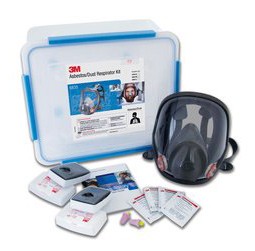Asbestos was an extremely popular material throughout the 20th century for a wide variety of building applications. It was non-flammable, and it performed admirably as an insulator for heat, corrosive chemicals, electricity and even sound. And it was cheap. Its use with cement to create composite “fibro” found particular favour in post-war Australia, as a means of cheaply and rapidly producing large numbers of “homes for heroes”. A different form of composite used “white” asbestos in the manufacture of friction materials for vehicle brakes and clutches. By the time, in the latter part of the century, it had become unavoidably clear that asbestos was responsible for serious, fatal illnesses like lung cancer, mesothelioma, asbestosis and pneumoconiosis, the developed world was shot through with the stuff. Asbestos is an imperishable material – that’s why it was so useful. Getting rid of it is going to take a while. In the meantime, we need to ensure that those who do encounter asbestos in their work are protected from its harmful effects.
Asbestos litigation, in which sufferers from these diseases and/or their relatives allege negligence on the part of their employers, has been the longest, most costly body of litigation in US history, and has had a similar impact in Australian jurisdictions. Asbestos remains a serious concern for anyone working on older buildings. This article discusses some of the implications of working with asbestos, and at some of the ways you can protect workers whose work may involve exposure to, and handling asbestos.
The term “asbestos” (meaning “unquenchable” in ancient Greek) is used to describe a set of six naturally occurring silicate minerals. These share certain key physical properties; long, thin, fibrous crystals, each composed of millions of microscopic fibrils which are easily released by abrasion and shock, forming a carcinogenic dust that is readily airborne.
In Australia, the use of asbestos in vehicles or for general building purposes has been banned since 31 December 2003. But of course this ban can only prevent new installations, and many businesses and their employees have to contend with asbestos that was installed decades earlier. Breaking up of fibro, hosing with water, dry brushing or air-blowing can all mobilise asbestos debris and endanger workers and even passers-by.
Contracting employers have an obligation to protect both their workers and the general public from the deleterious effects of any asbestos they find themselves working with. They must handle and transport any asbestos waste in accordance with the guidelines of the State Environmental Protection Agency in their state. This has certain key implications for managers and employers:
Following these guidelines will help you discharge your obligations and keep your workplace safe from the hazard of asbestos contamination. SafetyQuip carries a large range of equipment and PPE for workers handling asbestos. A phone call will get you in touch with a SafetyQuip adviser who can assist you in choosing the right products for your circumstances. For further information on handling asbestos, and to source training programs in your state, consult the following sites:

Safety Gear - Workwear - Footwear - Site Safety
Meeting your safety obligations to your workforce is a serious business. Standards evolve, and it can be tough to keep abreast of them. So it’s great to know you have a partner in SafetyQuip – a business that makes it its business to know your safety issues, and stocks all the safety workwear and PPE you will need to address them.
At SafetyQuip, we stock every kind of safety equipment and PPE, including respiratory protection, HI VIS safety workwear, height safety and skin protection. We stock safety equipment for materials handling, with ladders, platforms and elevated work spaces. And we’ve got you covered for personal protective equipment for the feet, with waterproof and steel capped work boots, plus a range of accessories.
Read More